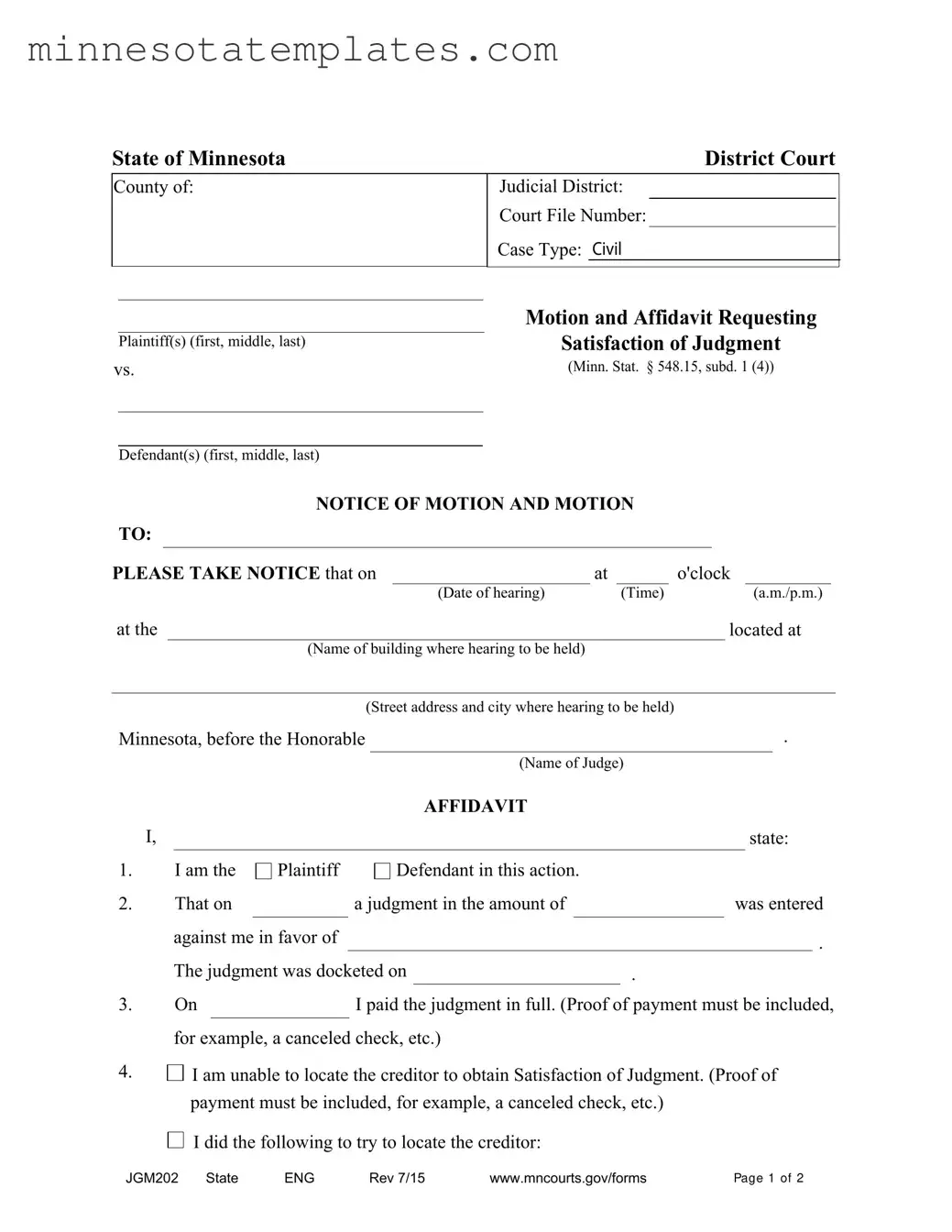The Jgm202 form plays a crucial role in the civil litigation process, specifically when it comes to the satisfaction of judgments in the state of Minnesota. This form is utilized by individuals who have fulfilled their financial obligations as dictated by a court judgment but are unable to secure a formal acknowledgment of that satisfaction from the creditor. It encompasses essential details such as the names of the plaintiff and defendant, the court file number, and the specific judicial district. Additionally, it includes a notice of motion, which informs the involved parties of the upcoming hearing, along with the date, time, and location where the matter will be addressed by the court. The affidavit section requires the individual to declare their status in the case, confirm the judgment amount, and provide proof of payment, such as a canceled check. If the creditor is unresponsive or refuses to complete the necessary Satisfaction of Judgment Form, the individual can request the court to direct the Court Administrator to enter the satisfaction. This process not only aids in clearing one’s legal record but also reinforces the importance of diligent follow-up in the aftermath of a judgment.
